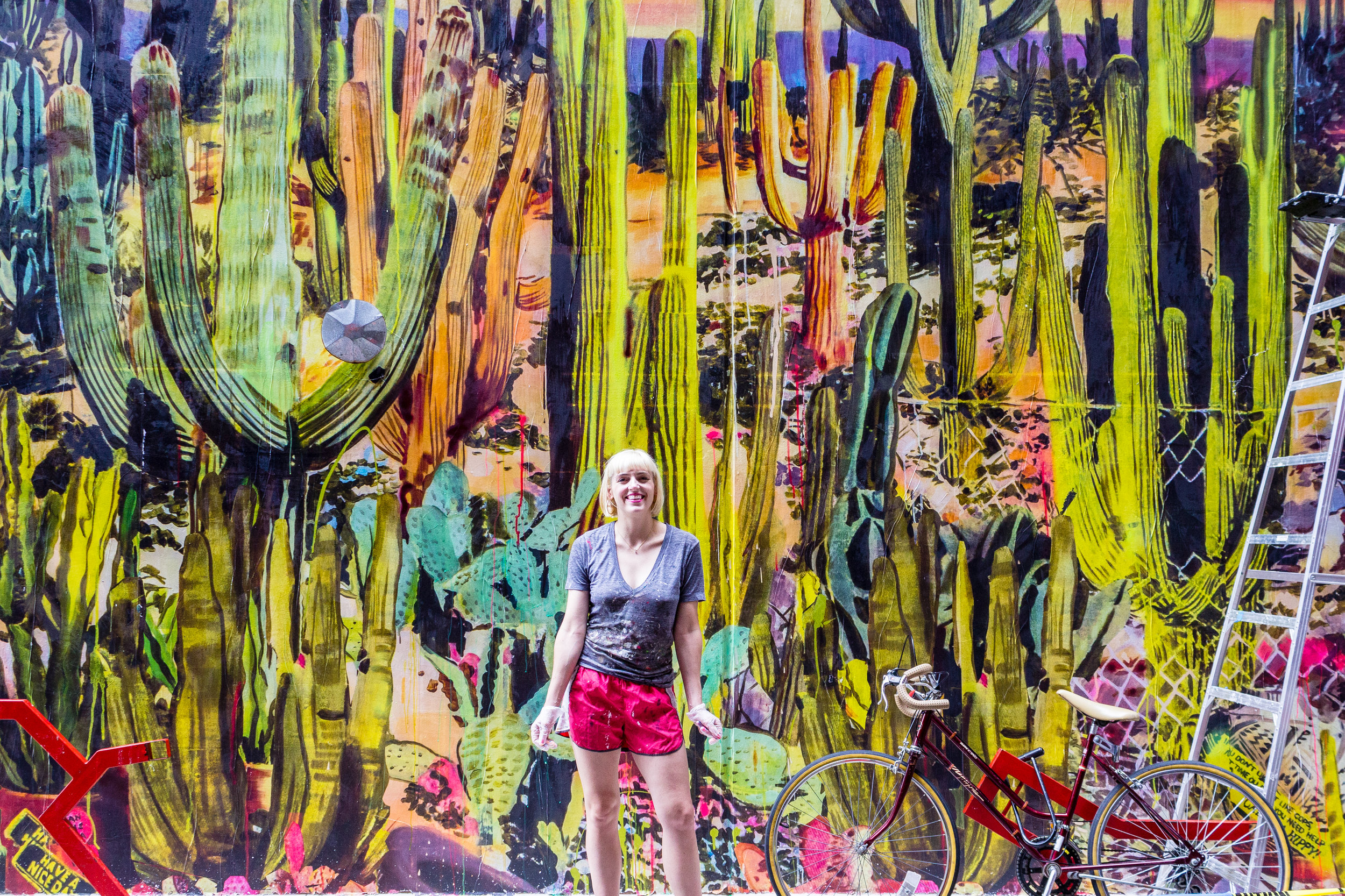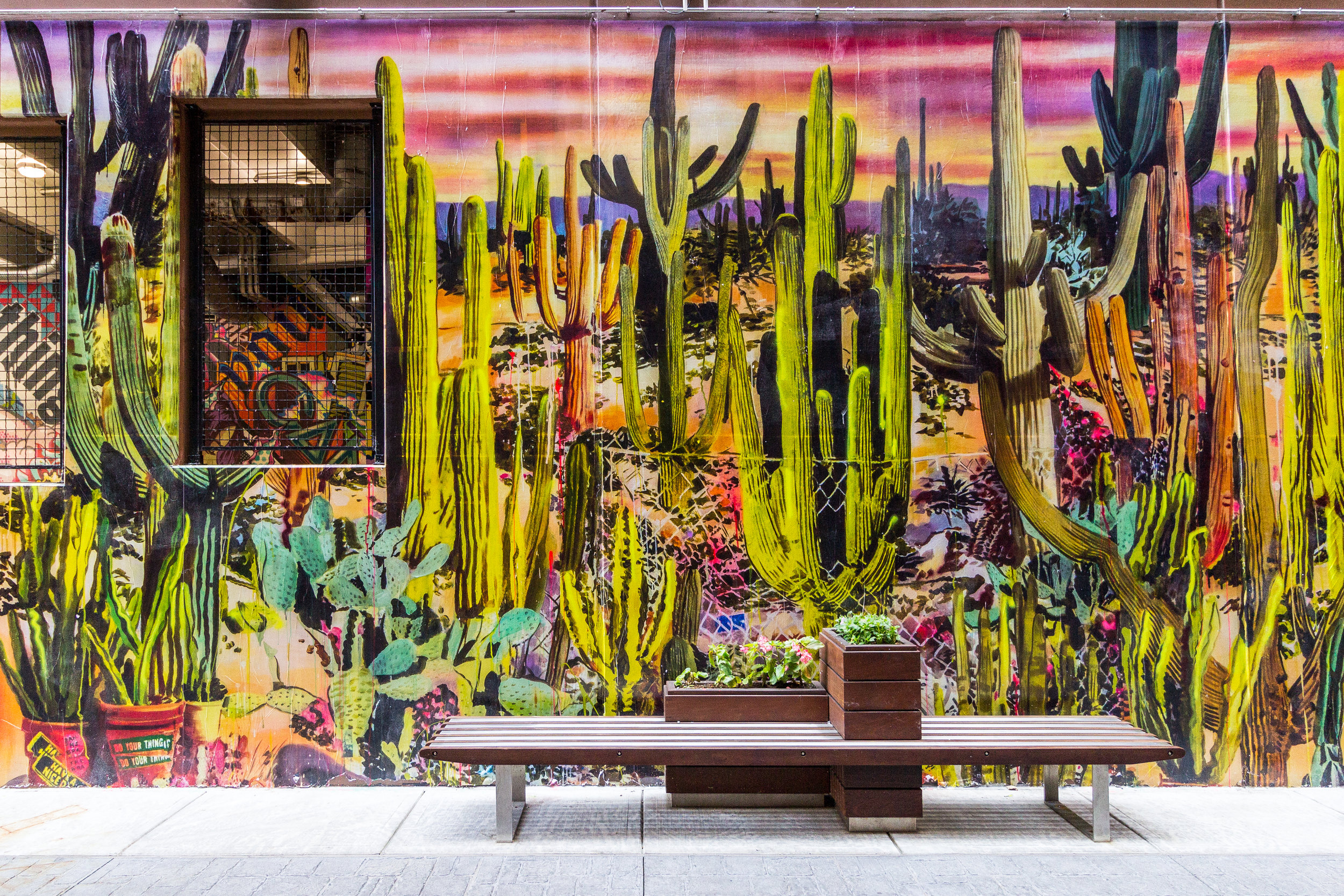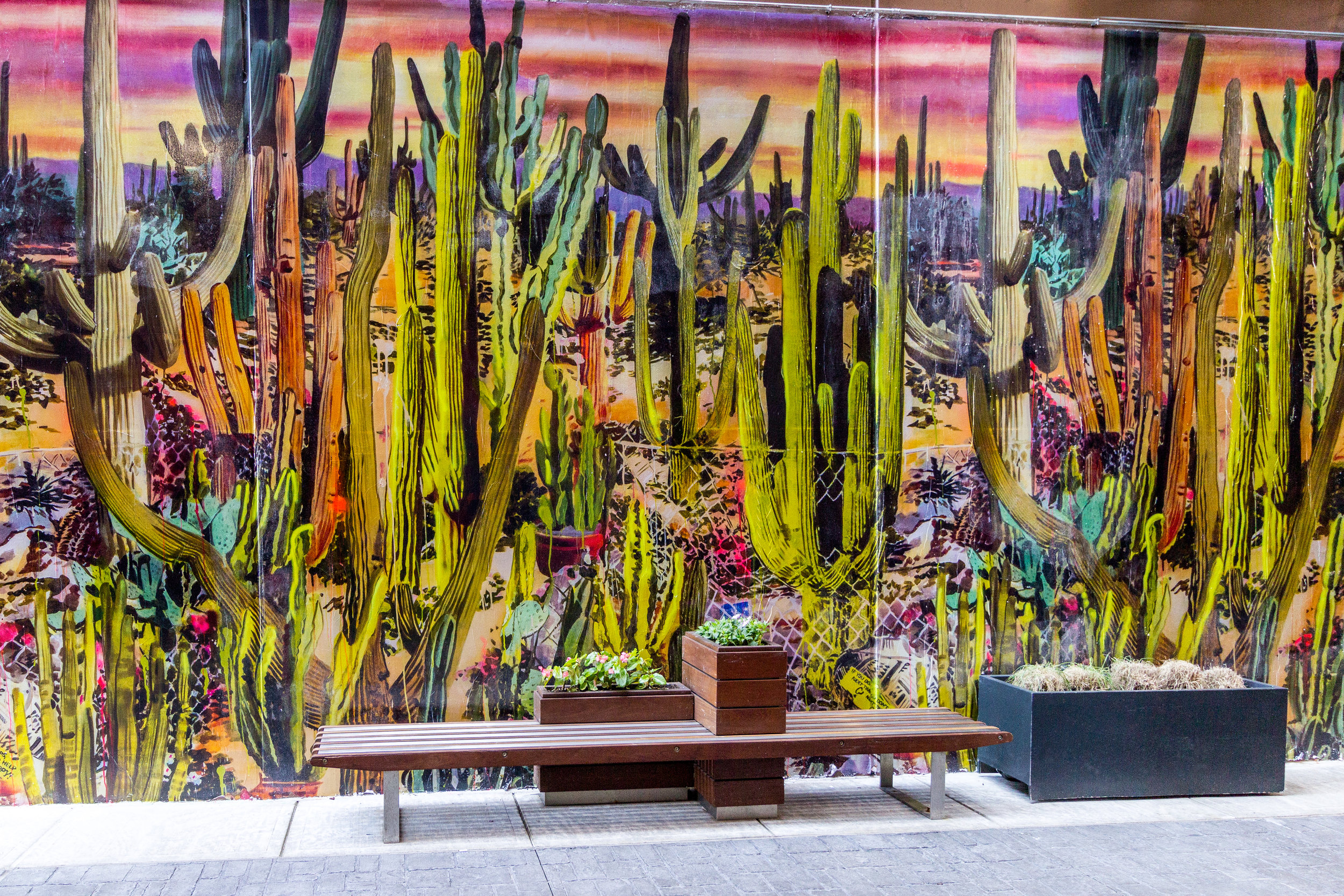Rosson Crow
Rosson Crow
Rosson Crow creates densely layered panoramas on a massive scale. Incorporating everything from shop aisles and neon signage to discarded beer cans and bumper stickers, her work is definitively LA and amends the concept of landscape as ‘trees-mountains-river’. In her short but intense career, a skillful depiction of space has engaged intricately stratified deserts, scenes from key places in American history, and California’s landmarks of iconic cult status. The artist herself is as timeless and multi-dimensional as her works, obsessed with Americana and historical misremembering and simultaneously on the pulse of contemporary art and culture.
Crow earned her MFA at Yale and later spent time in Paris before relocating to the west coast of California, which reminded her of her home state of Texas. With plenty of space to work and inspiration to draw from, her work grew in size. Early pieces from this time began her nod towards counter culture and spirituality, and her fascination with the dark history of figureheads of American politics and revolution. One work imagined an enigmatic space staged for the seance of JFK; while others fantasized the life and times of Madame Psychosis, a fictional woman obsessed with a false belief in her presence at the late President’s assassination. Crow’s works paint a vivid scene, yet the most important details are left to the imagination; in each and every painting, we know something momentus has - or has yet - to occur.
All set stage, oversized, and meticulously detailed, the works both entice disorientation and compel the viewer to step inside. A recent exhibition at the Museum of Contemporary Art Tuscon, titled Westification, brought together a collection of desert scapes and her most expansive works to date. Brightly colored, they present dense strata of cacti that glow hot and cold with the changing atmosphere. As with the desert works, discarded objects, tchotchkes and ephemera mingle within the plant life of the famous greenhouse designed by Albert Kahn in 1902 and inspired by London’s Crystal Palace.





